Permeability
Type of resources
Available actions
Topics
Keywords
Contact for the resource
Provided by
Years
Formats
Representation types
Update frequencies
Scale
-

Raw data from True Triaxial rock deformation experiment is included in TDMS and csv format. The TDMS file is the raw LabView data logging file including the time series of the experiments, loads, displacement and confining pressure. During each load step permeability measurements were made for the three loading axes. CSV files are provided for each permeability measurement, the load and axis are indicated in the file title. The TXT file includes the acoustic emission data.
-
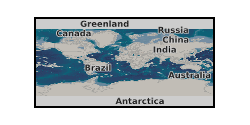
Posters and presentations from the UKCCSRC Call 1 Project: Mixed matrix membranes for post combustion carbon capture (Mar 2013 to Dec 2015). Membrane processes are a promising alternative to the more classical post-combustion capture technologies due to the reduced maintenance of the process, the absence of dangerous solvents and their smaller footprint. This project aims at supporting the development of new mixed matrix membranes for post-combustion applications. Mixed matrix membranes (MMMs) are composite materials formed by embedding inorganic fillers into a polymeric matrix in order to overcome the upper bound and combine the characteristics of the two solid phases: mechanical properties, economical processing capabilities and permeability of the polymer and selectivity of the filler. Despite several studies on the concept, the interactions between the two phases and their effect on the transport properties are not well understood. Yet, this fundamental knowledge is crucial in order to design the reliable materials needed for real-world-applications.
-

These data, presented in an excel spreadsheet, where each tab is a different sample (corresponding to the names in the publication), shows the fluid flow volume through time during a permeability measurement, plus the calculation of permeability. These permeability data were used in the publication by Weaver et al. 2023 (https://doi.org/10.1016/j.epsl.2023.118410) The data was collected and analysed at the University of Liverpool and each sample is made of volcanic glass fragments from Hrafntinnuhryggur, Iceland. The geographical location of the samples is here inconsequential for the dataset, the specific obsidian was chosen for its physical properties alone. The experiments were conducted and the data collected and analysed in 2021 and 2022 for publication in 2023. Experiments consisted of placing loose volcanic glass fragments in a crucible and placing the assembly in a high temperature oven (1006 oC) for variable amount of time to sinter them into a coherent material, before cooling and measuring permeability. The permeability measurement was made using the constant head permeability method with synthetic oil as a permeating fluid. This involves the filling of a given height of oil above the sample, creating an overburden that drives fluid flow. Details of the method are provided in detail in Weaver et al., 2023. The data were collected to assess the permeability evolution of fragmental systems undergoing diffusive outgassing, vesiculation and sintering to try to understand the longevity and impact of fragment-filled cracks present in volcanic environments.
-
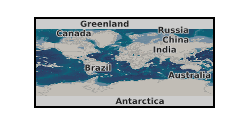
Data supporting 'Effective permeability tensors of three-dimensional numerically grown geomechanical discrete fracture networks with evolving geometry and mechanical apertures', submitted to the Journal of Geophysical Research: Solid Earth. Authors: Robin N Thomas (corresponding, robin.thomas11@imperial.ac.uk), Adriana Paluszny, Robert W Zimmerman. Department of Earth Science and Engineering, Imperial College London. Contents: For each GDFN, the geometry at each growth step. Additionally, for GDFN E, the data shown in the paper (aperture and flow distributions, figures 6 and 7) are provided, including the displacement for the mechanical case, and pressure distributions which were not shown in the manuscript. For the two SDFN sets, the geometry of the four datasets shown in figures 4 and 5 are provided. Notes: - The geometry files are provided in the .3dm format, Rhinocerous' native format (https://www.rhino3d.com/). A free trial of Rhinocerous can be used to explore the files, and can convert them to a range of other CAD file types. - VTK files can be viewed using free software such as Paraview (https://www.paraview.org/). These contain the meshes. - Fracture surface areas reported in the paper are derived from the mesh, rather than the geometry. The mesh approximates the geometry leading to a different surface area than those measured in the geometry (3dm) files. - The SDFN datasets are shown before trimming the parts of fractures which are outside the domain. These parts are trimmed when they are imported to ICGT.
-
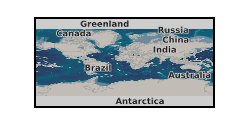
Data recorded during triaxial rock deformation experiments of Westerly granite in the presence of pressurised pore fluids (water). Data consists of mechanical data (load, displacement, confining pressure) and pore pressure data (up- and downstream pore pressure, upstream intensifier volume, four pore pressure transducers mounted on sample). Contains all data necessary to evaluate the results presented in the paper entitled: 'Dilatancy stabilises shear failure in rock' by Aben and Brantut, submitted to Earth and Planetary Science letters, and available at arXiv (arXiv:2101.10036).
-

These are so-called relaxation datasets for the rate of structural relaxation of glass exposed to high temperatures. The glass is in the form of chips collected during the IDDP-1 drilling project at Krafla Iceland (more below). The chips were generated during drilling in 2011. However, the analysis presented here was developed in 2023 ahead of the ultimate publication in 2024. The data were collected using differential scanning calorimetry, which is a standard method in glass science for measuring the enthalpy of glass relaxation as it is returned to the high temperatures from which it formed. The relaxation rate of the glass from IDDP-1 tells us directly what the rate was at which it cooled. That "cooling rate" in turn allows us to understand what the time available for fragmentation and sintering in geothermal systems is, which has informed this wider project.
-
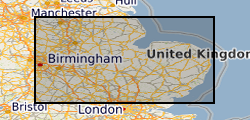
The data comprises a GIS layer representing the permeability of bedrock for Great Britain The permeability data has been derived from DiGMap-GB (Digital Geological Map Data of Great Britain), and therefore reflects the scale of DiGMap-GB. For the majority of the Great Britain, the scale is 1:50,000, however in areas where the geology is not mapped to this scale, 1:250,000 data are. The data is updated annually, or after a major new release of DiGMap-GB. The permeability data describes the fresh water flow through geological deposits and the ability of a lithostratigraphical unit to transmit water. Maximum and minimum permeability indices are given for each geological unit to indicate the range in permeability likely to be encountered and the predominant flow mechanism (fracture or intergranular). Neither of the assigned values takes into account the thickness of either the unsaturated or saturated part of the lithostratigraphical unit. The data can be used freely internally, but is licensed for commercial use. It is best displayed using a desktop GIS, and is available in vector format as ESRI shapefiles and MapInfo TAB files.
-
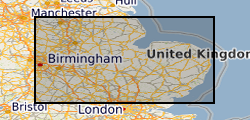
The data comprises a GIS layers representing the permeability of Superficial geological deposits for Great Britain. The permeability data has been derived from DiGMap-GB (Digital Geological Map Data of Great Britain), and therefore reflects the scale of DiGMap-GB. For the majority of the Great Britain, the scale is 1:50,000, however in areas where the geology is not mapped to this scale, the next best available scale, 1:625:000, is used. The data is updated annually, or after a major new release of DiGMap-GB. The permeability data describes the fresh water flow through geological deposits and the ability of a lithostratigraphical unit to transmit water. Maximum and minimum permeability indices are given for each geological unit to indicate the range in permeability likely to be encountered and the predominant flow mechanism (fracture or intergranular). Neither of the assigned values takes into account the thickness of either the unsaturated or saturated part of the lithostratigraphical unit. The data can be used freely internally, but is licensed for commercial use. It is best displayed using a desktop GIS, and is available in vector format as ESRI shapefiles and MapInfo TAB files.
-
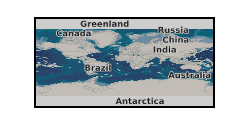
Posters and presentations from the UKCCSRC Call 1 Project: Mixed matrix membranes for post combustion carbon capture (Mar 2013 to Dec 2015). Membrane processes are a promising alternative to the more classical post-combustion capture technologies due to the reduced maintenance of the process, the absence of dangerous solvents and their smaller footprint. This project aims at supporting the development of new mixed matrix membranes for post-combustion applications. Mixed matrix membranes (MMMs) are composite materials formed by embedding inorganic fillers into a polymeric matrix in order to overcome the upper bound and combine the characteristics of the two solid phases: mechanical properties, economical processing capabilities and permeability of the polymer and selectivity of the filler. Despite several studies on the concept, the interactions between the two phases and their effect on the transport properties are not well understood. Yet, this fundamental knowledge is crucial in order to design the reliable materials needed for real-world-applications.
-

The use of synthetic samples for rock physics experiments in the lab is a common practice for reservoir characterization and reservoir studies. This dataset gather ultrasonic P- and S-wave velocities and attenuations, electrical resistivity, axial and radial strains, permeability and mineralogical composition, of two synthetic and two natural sandstones, measured at variable realistic reservoir conditions of stress. The data were collected during an original study which aimed to assess the extent to which the measured properties between synthetic and natural sandstones are comparable. The work was accepted for publication in Geophysical Prospecting on the 01/10/2018, which can be accessed following the link: https://doi.org/10.1111/1365-2478.12699 Falcon-Suarez, I.H., Amalokwu, K., Robert, K., North, L., Best, A.I., Delgado-Martin, J., Callow, B., Sahoo, S.K. (accepted). Comparison of stress dependent geophysical, hydraulic and mechanical properties of synthetic and natural sandstones for reservoir characterisation and monitoring studies. Geophysical Prospecting
 NERC Data Catalogue Service
NERC Data Catalogue Service